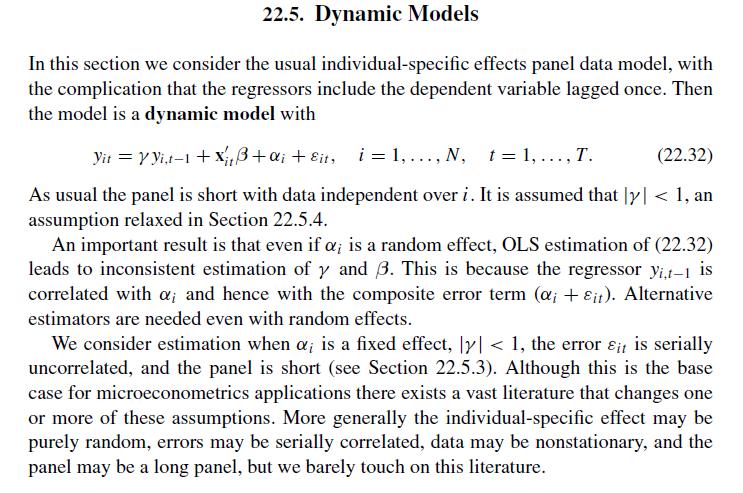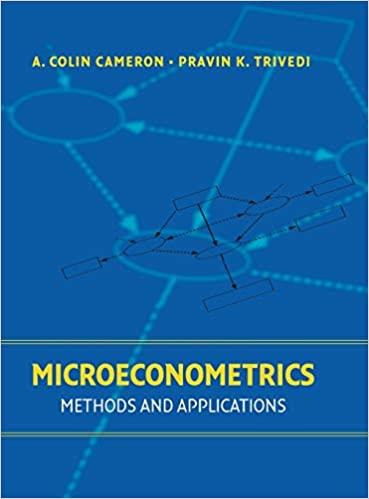Consider the panel data model (y_{i t}=alpha+beta x_{i t}+gamma w_{i t}+u_{i t}, i=1, ldots, N, t=) (1,
Question:
Consider the panel data model \(y_{i t}=\alpha+\beta x_{i t}+\gamma w_{i t}+u_{i t}, i=1, \ldots, N, t=\) \(1, \ldots, T\), where for simplicity there is no individual-specific effect. Suppose the scalar regressor \(x_{i t}\) is correlated with \(u_{i s}\) for all \(t\) and \(s\). For each of the following parts state whether consistent IV estimation of \(\beta\) and \(\gamma\) is possible, and if so give all the suitable instruments, based on the discussion in Section 22.2. Assume that three periods of data are available, so \(T=3\), and note that a variable may not be available as an instrument in all years, and that in different years different instruments may be available.
(a) The regressor \(w_{i t}\) satisfies the summation assumption \(\mathrm{E}\left[\sum_{t} w_{i t} u_{i t}\right]=0\).
(b) The regressor \(w_{i t}\) satisfies the contemporaneous exogeneity assumption \(\mathrm{E}\left[w_{i t} u_{i t}\right]=0, t=1, \ldots, 3\).
(c) The regressor \(w_{i t}\) satisfies the weak exogeneity assumption \(\mathrm{E}\left[w_{i s} u_{i t}\right]=\) \(0, s \leq t, t=1, \ldots, 3\).
(d) The regressor \(w_{i t}\) satisfies the strong exogeneity assumption \(E\left[w_{i t} u_{i t}\right]=\) \(0, s, t=1, \ldots, 3\).


Step by Step Answer:

Microeconometrics Methods And Applications
ISBN: 9780521848053
1st Edition
Authors: A.Colin Cameron, Pravin K. Trivedi





